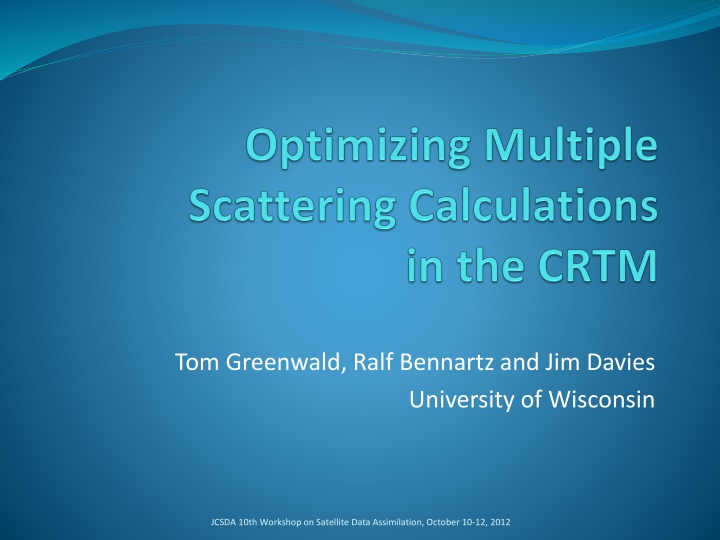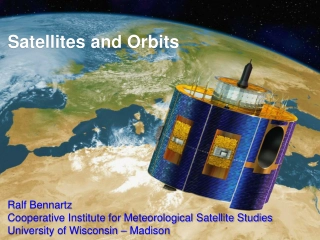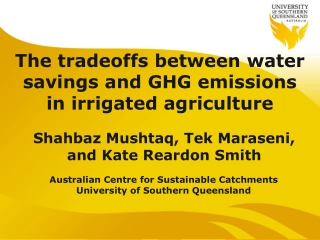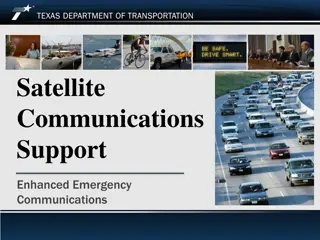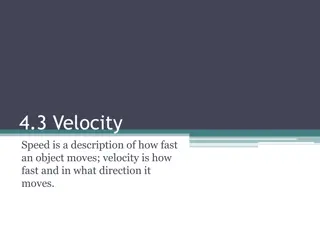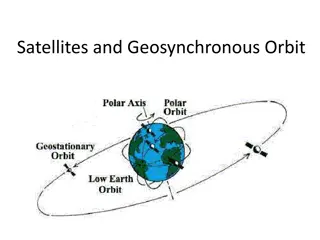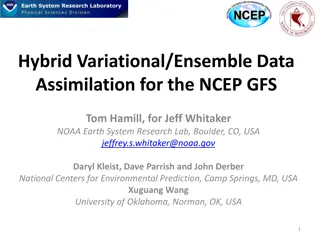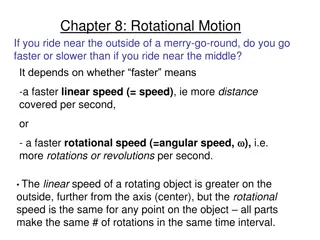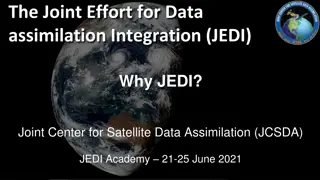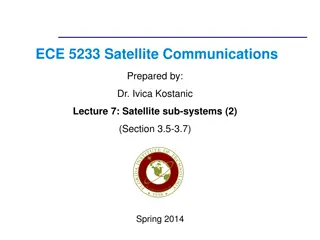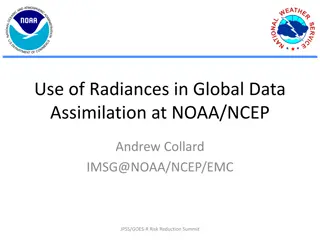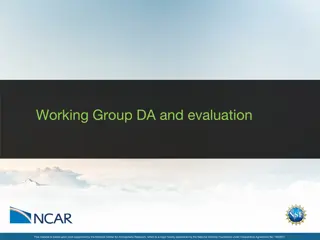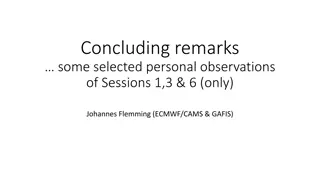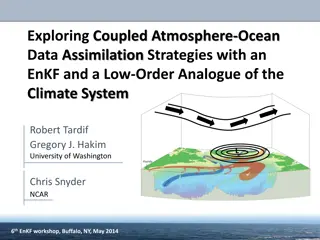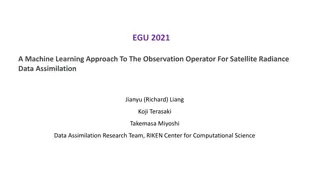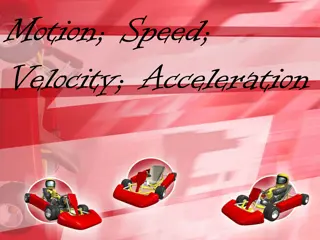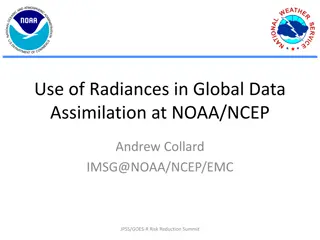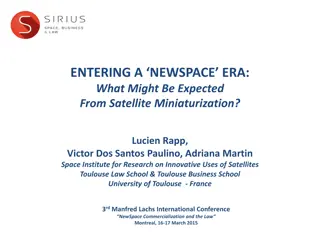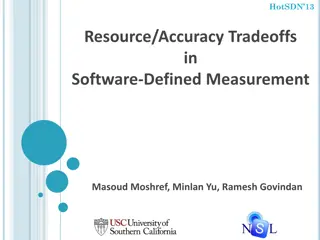Addressing Speed-Accuracy Tradeoffs in Satellite Data Assimilation
Develop a scattering indicator to determine the optimal number of streams for the solver, based on successive order of scattering, optical depth, and single-scatter albedo. Apply thresholds to automatically adjust stream numbers for accuracy. Results show improvements in Hurricane Katrina and marine stratocumulus data assimilation processes.
Download Presentation

Please find below an Image/Link to download the presentation.
The content on the website is provided AS IS for your information and personal use only. It may not be sold, licensed, or shared on other websites without obtaining consent from the author.If you encounter any issues during the download, it is possible that the publisher has removed the file from their server.
You are allowed to download the files provided on this website for personal or commercial use, subject to the condition that they are used lawfully. All files are the property of their respective owners.
The content on the website is provided AS IS for your information and personal use only. It may not be sold, licensed, or shared on other websites without obtaining consent from the author.
E N D
Presentation Transcript
Tom Greenwald, Ralf Bennartz and Jim Davies University of Wisconsin JCSDA 10th Workshop on Satellite Data Assimilation, October 10-12, 2012
Motivation Address speed/accuracy tradeoffs in CRTM multiple scattering calculations Develop a scattering indicator to find a priori the optimum number of streams for the solver (i.e., minimum streams needed to achieve a desired accuracy) 2 JCSDA 10th Workshop on Satellite Data Assimilation, October 10-12, 2012
Methods Scattering indicator (SI) based on successive order of scattering (Stephens 1994) Simple analytical function Depends on optical depth and single-scatter albedo Enhancements to Stephens formulation Include effects of gas absorption Extend to multiple layers using a vertically weighted single-scatter albedo (Bennartz and Greenwald 2011) 3 JCSDA 10th Workshop on Satellite Data Assimilation, October 10-12, 2012
Methods Contd Apply thresholds to the SI to automatically increase the numbers of streams (aka selection rules ) Source of cloud profiles: WRF model simulations Hurricane Katrina (1.5 km) California marine stratocumulus (2 km) South Atlantic frontal system (3 km) Limit to microwave sensors for now; define target accuracy as 0.5 K (typical radiometric sensitivity) CRTM 16-stream solution used as a reference to quantify error 4 JCSDA 10th Workshop on Satellite Data Assimilation, October 10-12, 2012
Examples 0.5 K 0.5 K 5 JCSDA 10th Workshop on Satellite Data Assimilation, October 10-12, 2012
Results Hurricane Katrina Water Vapor Sounding Channel (183 1 GHz) Temperature Sounding Channel (55.5 GHz) 6 JCSDA 10th Workshop on Satellite Data Assimilation, October 10-12, 2012
Results - Hurricane Katrina Tb error Streams Mean Error 55 GHz 183 1 GHz % Optimum Streams 7 0 2 4 6 8 16 Error (K)
Results Marine Sc 150 GHz 8 JCSDA 10th Workshop on Satellite Data Assimilation, October 10-12, 2012
Results Marine Sc Tb error Streams Mean Error 37H GHz 150 GHz % Optimum Streams 0 2 4 6 8 16 9 Error (K)
Results Frontal System South Atlantic Temperature Sounding Channel (54.4 GHz) Queen Mary s Peak on Tristan da Cunha Water Vapor Sounding Channel (183 3 GHz) 10 JCSDA 10th Workshop on Satellite Data Assimilation, October 10-12, 2012
Results Frontal System Tb error 54.4 GHz Streams 183 3 GHz 0 2 4 6 8 16 Error (K) Mean Error % Optimum Streams 11
Accomplishments Developed a method of automatically selecting the optimum number of streams in the CRTM Generally, optimum values achieved 85-100% of the time Suboptimal (40-75%) in water vapor bands Factors of 5-10 speedup for temperature sounding channels Modified CRTM code to include new method (FWD/TL only) CRTM v2.1 Number of streams option (overrides auto-selection) Successive Order of Interaction (SOI) RT solver Publication: Bennartz and Greenwald (2011, QJRMS) 12 JCSDA 10th Workshop on Satellite Data Assimilation, October 10-12, 2012
Plans Fine-tune selection rules Explore use of other SIs (e.g., Mie size parameter) in strongly scattering and absorbing conditions Write adjoint code Extend method to IR sensors for clouds and aerosols Include in CRTM v2.2 release 13 JCSDA 10th Workshop on Satellite Data Assimilation, October 10-12, 2012
